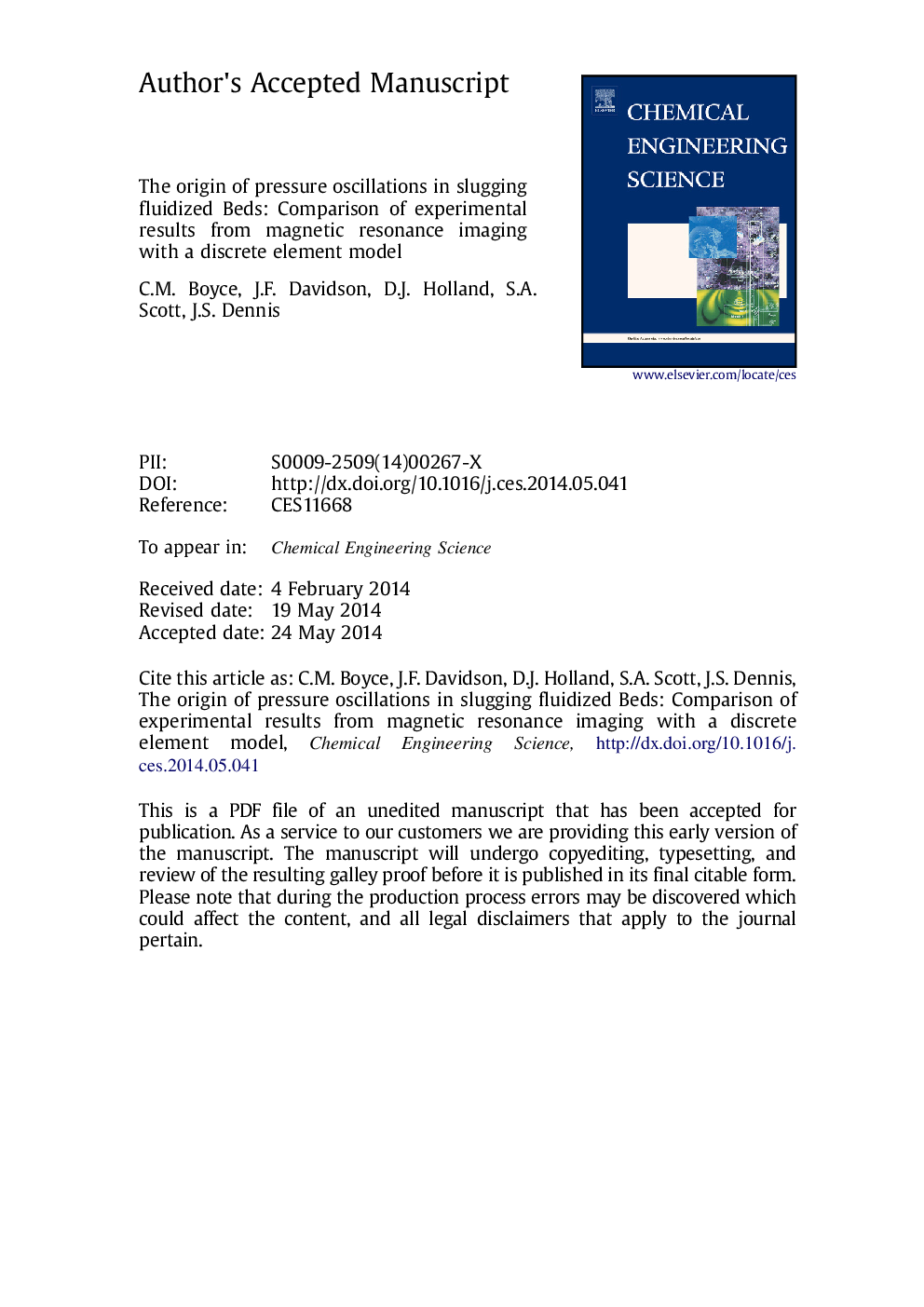| Article ID | Journal | Published Year | Pages | File Type |
|---|---|---|---|---|
| 6591106 | Chemical Engineering Science | 2014 | 32 Pages |
Abstract
A 3-D cylindrical discrete element model with computational fluid dynamics (DEM-CFD) was used to investigate the origin of pressure oscillations in bubbling and slugging fluidized beds in which only one bubble can erupt at a time. Beds 50Â mm in diameter with various settled bed heights and superficial velocities were simulated for direct comparison with experimental results obtained using magnetic resonance imaging (MRI) and a pressure sensor (Müller et al., 2007). The theoretical predictions matched experimental results well for the frequencies of (i) pressure oscillations near the distributor and (ii) bubble eruption at the bed surface. In both model and experiment it was found that the frequency of pressure oscillations near the distributor matched the frequency of bubble eruption at the top of the bed, rather than the frequency of bubble formation at the distributor. Further simulations showed that pressure oscillations at all positions in the bed originated from the drag force imparted on the fluid by the particles, rather than from a pulse in pressure created upon bubble eruption and subsequently propagated down through the bed, as proposed by Müller et al. (2007). The theory also demonstrated that drag force and thus pressure drop was concentrated in “plugs”, viz. regions packed with particles across a horizontal cross section of the bed. These regions were largest in size after bubble eruptions, causing the frequency of pressure oscillations to match that of bubble eruption.
Keywords
Related Topics
Physical Sciences and Engineering
Chemical Engineering
Chemical Engineering (General)
Authors
C.M. Boyce, J.F. Davidson, D.J. Holland, S.A. Scott, J.S. Dennis,
